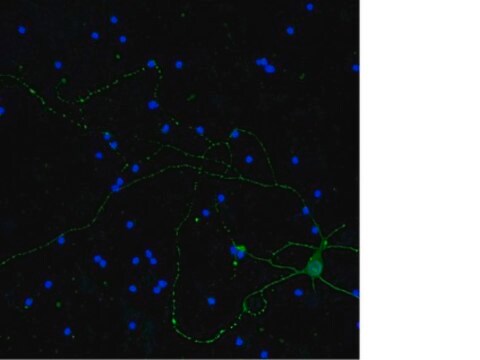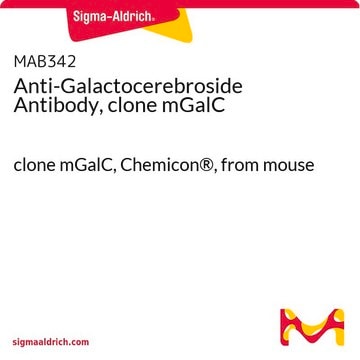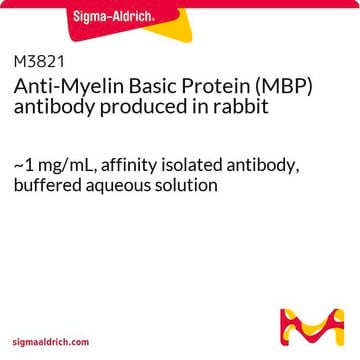MAB5256A5
Anti-Neurofilament 200kDa Antibody, clone NE14, Alexa Fluor™ 555 Conjugate
clone NE14, from mouse, ALEXA FLUOR™ 555
Sinónimos:
Neurofilament heavy polypeptide, NF-H, 200 kDa neurofilament protein, Neurofilament triplet H protein
About This Item
Productos recomendados
origen biológico
mouse
Nivel de calidad
conjugado
ALEXA FLUOR™ 555
forma del anticuerpo
purified antibody
tipo de anticuerpo
primary antibodies
clon
NE14, monoclonal
reactividad de especies
mouse, rat, pig
reactividad de especies (predicha por homología)
human (100% sequence homology), porcine (immunogen homology)
técnicas
immunocytochemistry: suitable
immunohistochemistry: suitable
isotipo
IgG1
Nº de acceso NCBI
Nº de acceso UniProt
Condiciones de envío
wet ice
modificación del objetivo postraduccional
unmodified
Información sobre el gen
human ... NEFH(4744)
mouse ... Nefh(380684)
pig ... Nefh(100156492)
rat ... Nefh(24587)
Descripción general
Aplicación
Calidad
Immunocytochemistry Analysis: A 1:100 dilution of this antibody detected Neurofilament in rat E18 primary cortex cells.
Otras notas
Información legal
¿No encuentra el producto adecuado?
Pruebe nuestro Herramienta de selección de productos.
Código de clase de almacenamiento
12 - Non Combustible Liquids
Clase de riesgo para el agua (WGK)
WGK 2
Punto de inflamabilidad (°F)
Not applicable
Punto de inflamabilidad (°C)
Not applicable
Certificados de análisis (COA)
Busque Certificados de análisis (COA) introduciendo el número de lote del producto. Los números de lote se encuentran en la etiqueta del producto después de las palabras «Lot» o «Batch»
¿Ya tiene este producto?
Encuentre la documentación para los productos que ha comprado recientemente en la Biblioteca de documentos.
Nuestro equipo de científicos tiene experiencia en todas las áreas de investigación: Ciencias de la vida, Ciencia de los materiales, Síntesis química, Cromatografía, Analítica y muchas otras.
Póngase en contacto con el Servicio técnico








